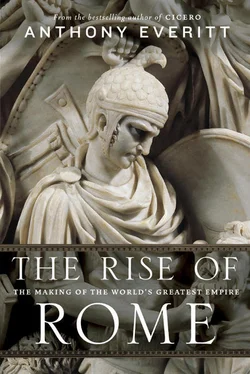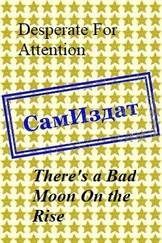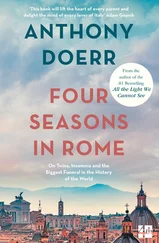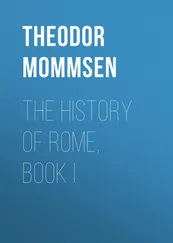On occasion, contemporary academics overreach themselves. They dismiss incidents because they are, to the rational mind, simply implausible; they must have been made up. Unfortunately, much in history is implausible. It is in the nature of human affairs that this should be so.
Throughout the time span of this book and especially in the first centuries, academic crux succeeds academic crux. Sometimes agreement has been reached, elsewhere debate continues, often fierily. Every now and again, one suspects an excess of ingenuity. While I nod in the direction of these uncertainties, if not in the main text then in the endnotes, I do not spend too much time on difficulties of interpretation, which are of little interest to anyone but the specialist.
Taking the variable nature of the literary sources into account, I have divided the book into three parts: Legend, the age of the kings, where most of the events never took place, at least not in the manner described; Story, the conquest of Italy and constitutional conflict, where fact and fiction cohabit; and History, the Republic as a Mediterranean power, where the literary sources make a serious attempt at objectivity and accuracy.
I CLOSE MY narrative with the bitter civil war between Sulla and Marius in the first century B.C., and the statesmanlike eastern settlement of Pompey the Great. The contrast between external triumph and domestic collapse could scarcely be greater.
Although more conquests were to come, the Republic was now the undisputed ruler of a vast Mediterranean empire; at the same time, it was on the verge of a final and irrevocable constitutional breakdown. The men who governed the world were unable to govern themselves.
Readers who want to know what happened next may wish to consult my lives of Cicero and Augustus, which trace at some length Rome’s bloody transition from a partial democracy to a total autocracy.
When I refer to a year or to a particular century, it should be understood as B.C., unless specified otherwise.
Roman nomenclature is complicated and requires an explanation. Most male citizens had three names. The first was the given name, or praenomen . In the late Republic, only eighteen of these were in general use, the most popular being Aulus, Decimus, Gaius, Gnaeus, Lucius, Marcus, Publius, and Quintus. As a rule, an eldest son took his father’s praenomen—annoyingly, because it requires care to distinguish between different historical figures with identical names.
Then followed the nomen , or family name, the equivalent of our surname. After this came the cognomen . Originally, this was a nickname attached to a particular person (thus Cicero means “chickpea” and presumably referred to a pimple on the face of a once-upon-a-time Tullius), but over the years it came to denote branches of the larger family, or clan. A successful general would be given an additional cognomen, or agnomen , which referred to the enemy he overcame. So, after defeating Hannibal in northern Africa, Publius Cornelius Scipio became Publius Cornelius Scipio Africanus.
The subordinate status of women was exemplified by the fact that they were allocated only one name, the feminine version of the family nomen. So the daughter of Marcus Tullius Cicero was called Tullia. Sisters had to share the same name, which must have caused confusion in the family circle. They usually kept their nomina after marriage (so Cicero’s wife was called Terentia, not Tullia).
When using his full official designation, a Roman citizen inserted after his nomen his father’s praenomen and his tribe. So the complete Cicero was Marcus Tullius M[arci] f [ ilius , or “Marcus’s son”] Cor[nelia tribu , “in the Cornelia tribe”] Cicero.
When readers use this book’s index, they should refer to the nomen. So when looking up Cicero, they will find him listed under the T ’s as Tullius Cicero, Marcus. Tiresome, but that is how it is.
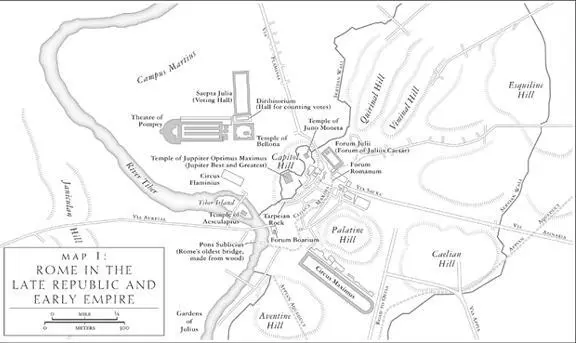
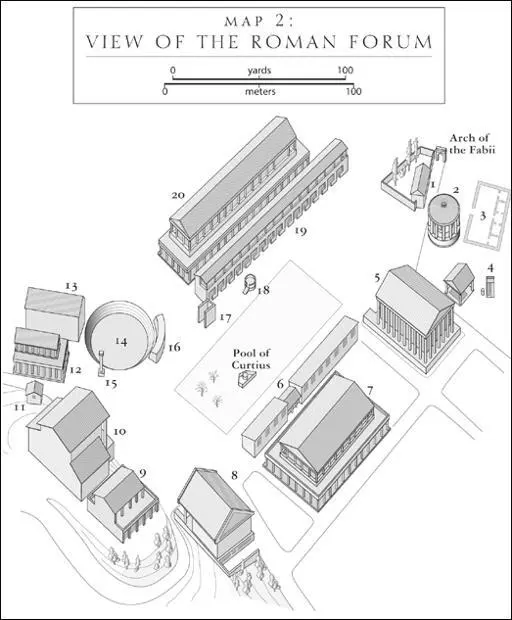
A reconstruction of the Roman Forum in the second century. Beginning from the top right, then clockwise. The triangular Regia (1); the circular temple of Vesta (2); in plan the House of the Vestals (3); the Pool of Iuturna (4), a long narrow trough; the temple of Castor and Pollux (5); the Old Shops (6), a row in front of the Basilica Sempronia (7); the temple of Saturn (8), Rome’s treasury; the Basilica Opimia (9); the temple of Concord (10); the tiny state Prison (11); the Basilica Porcia (12); the Senate-House or Curia (13), which looks out on the circular Comitium (14), a gathering place for meetings of the People’s assembly; the Column of Gaius Maenius (15), victor of a naval battle against Antium in 338; the speakers’ platform or Rostra (16), named after captured ships’ prows from Maenius’s victory; the shrine of Janus (17); the shrine of Venus Cloacina (18); the line of New Shops (19), behind which stands the Basilica Aemilia (20).
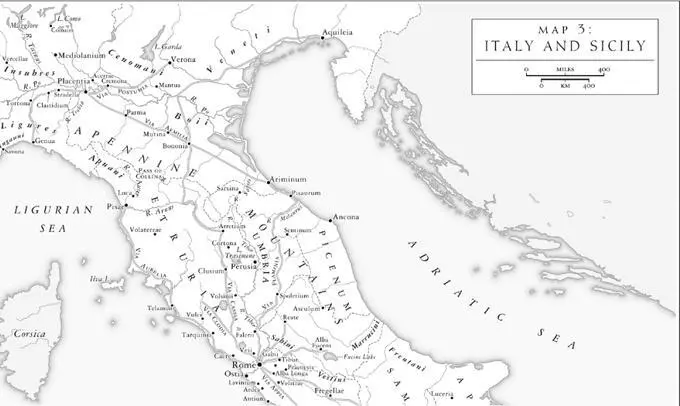
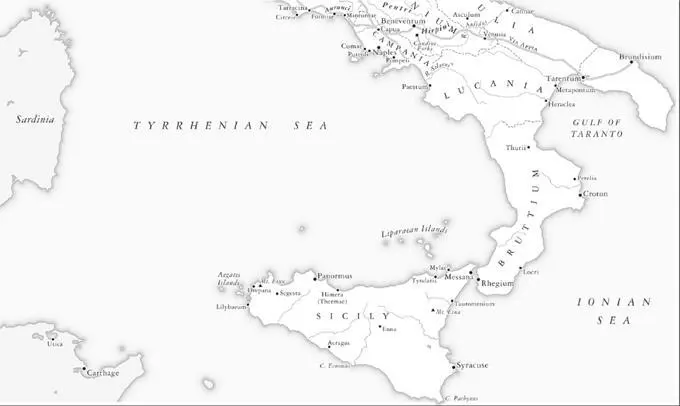
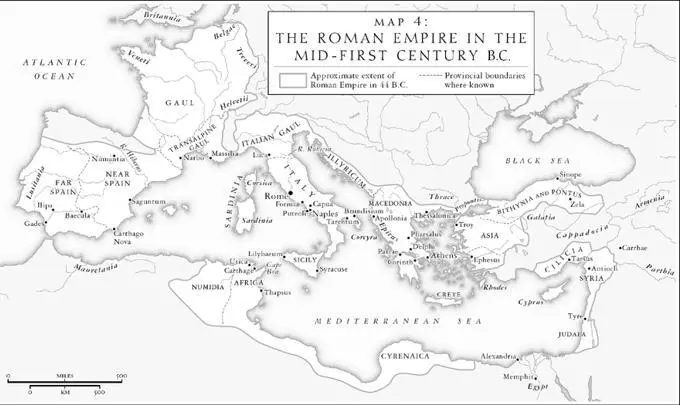
TWO OLD FRIENDS, NOW GETTING ON IN YEARS, WERE looking forward to meeting each other again. The year was 46 B.C. and Marcus Terentius Varro, the most prolific author of his day, was on his way to his country house a few miles south of Rome. A shrewd, practical man, Varro was no deep thinker, but he did try to know all that was known. His neighbor Marcus Tullius Cicero was a great public speaker, whether in the law courts or in the political bear pit of the Senate House. Self-regarding, eloquent, and sensitive, Cicero was vinegar to Varro’s oil. For all that, they liked each other, largely because they shared the same interests. One of these was a passion for Rome’s past.
By a happy chance, a few of Cicero’s letters to Varro have survived the bonfire of time. In one note, Cicero urged Varro to hurry up: “I am coming to hope that your arrival is not far away. I wish I may find some comfort in it though our afflictions are so many and so grievous that nobody but an arrant fool ought to hope for any relief.”
The “afflictions” Cicero had in mind stemmed from a civil war among Rome’s governing élite. Leading personalities were at risk of losing life and limb. What were they to do, they asked themselves anxiously, in an age when the Roman Republic, the ancient world’s lone superpower, omnipotent abroad, seemed bent on destroying itself at home?
MOST OBSERVERS OF the day thought that the rot had set in a century or so previously. Rome’s conquest of Greece and much of the Near East released unimaginable quantities of gold, not to mention that human gold, uncounted numbers of slaves. Wealth flooded into Rome, which became, in effect, the capital of the known world and grew into a multicultural melting pot and megalopolis of up to one million souls.
This was the unintended consequence of winning an empire, and it is perhaps no accident that the serious study of Rome’s past began at about this time. To men like Varro and Cicero, the once tough, socially responsible, resourceful, and plain-living Roman was being softened and subverted by the Oriental vices of greed, luxury, and sexual license. The city’s constitution had served it well for centuries. A lawmaking citizens’ assembly balanced a small ruling class of nobles. But for this system to work effectively a capacity for compromise and reasonableness was essential—and now this capacity had been lost.
Читать дальше
